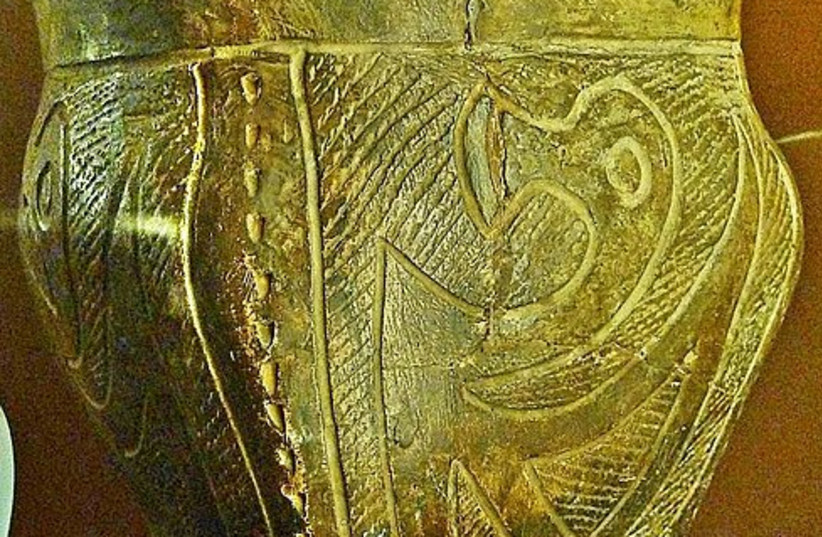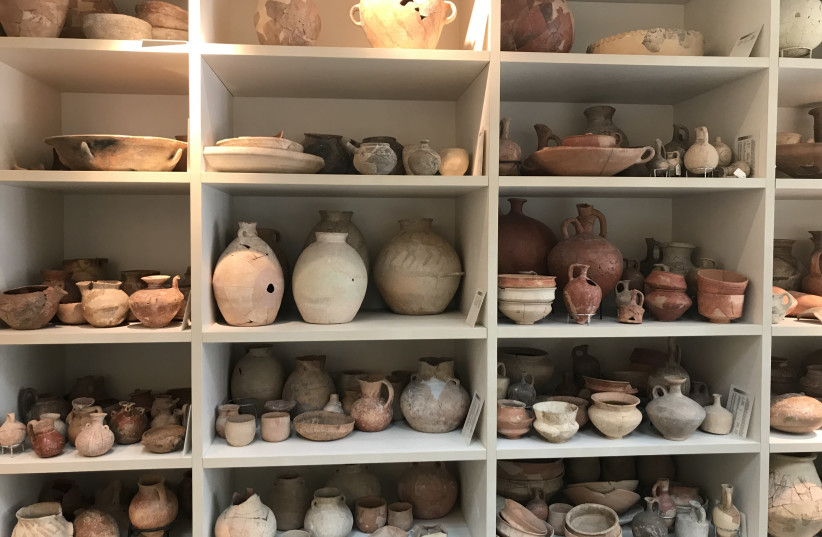An ancient jar dating back to the Iron Age has archaeologists and ancient world-enthusiasts alike completely puzzled.
Why? It is so large that these experts can't quite pinpoint how it would fit through a door, so they hypothesized a unique possibility.
Is it possible that the building that housed this massive jar could have been built around this piece of pottery? According to archaeologists from the Sharjah Museum of Islamic Civilization’s Muwaileh archaeological site, that seems like the most probable option. Another likely possibility was that this massive pottery piece was created inside of the building where it spent its days in ancient times.
This massive piece of pottery was recently added to the Sharjah Archaeological Museum from the Muwaileh archaeological site, both located in the United Arab Emirates.
Either way, they say, it was certainly too large to fit through the door.

The jar was initially found broken into several fragments and has since been reconstructed inside of the Sharjah Archaeological museum. It stands at just over five feet in height, and just under the same measurement in width. That is one massive jar.
While archaeologists at the Sharjah Museum of Islamic Civilization still speculate about the specific use of this artifact, they believe it provides clues to the incense trade of the ancient world, and more specifically between southern Arabia and Persia. When this jar was created, this region had an active incense trade that the region depended on.
When was this jar used?
This jar was believed to be used between 600 and 900 BCE, during a period known as the Iron Age, which began around 1200 BCE. This time period is often used to identify events and items from Iron Age Europe and the Ancient Near East.
This jar came from a time period that truly changed the world. Not only were the Hanging Gardens of Babylon under construction in what became modern day Iraq, but the Chinese were also inventing printing at the time. It is hard to say for sure just what historical events this massive jar may have been present for.
Around the same time, the falaj irrigation system was developed, on land that can now be identified as the United Arab Emirates (UAE) and Oman.
What kind of community was this jar found in?
The Muwailen settlement, now an archaeology site, included several houses of mud brick, similar to others discovered in the UAE from the Iron Age. The building that housed the jar was the largest in the settlement, or at least, the largest with a roof covering. It housed many rooms and annexes, leading to speculation on the building's initial use.
According to National News - UAE, The jar was notably found in a hall filled with columns. The columns were made from date palms with stone bases for support, arranged in several rows. Archaeologists believed that this building was a booming economic center for this community. They believed it was the economic pulse of the settlement and a possible gathering place for those in power.

It may have also been used to welcome guests and visitors to the settlement.
Manal Ataya, director general of Sharjah Museums Authority, believes this jar is a one-of-a-kind discovery, and invites visitors to come see for themselves. She stated that this artifact “best demonstrates the beauty of discovery and the remarkable feat undertaken by dedicated archaeologists and conservators that spent years piecing together numerous fragments without initially knowing what the finished vessel would look like”.
